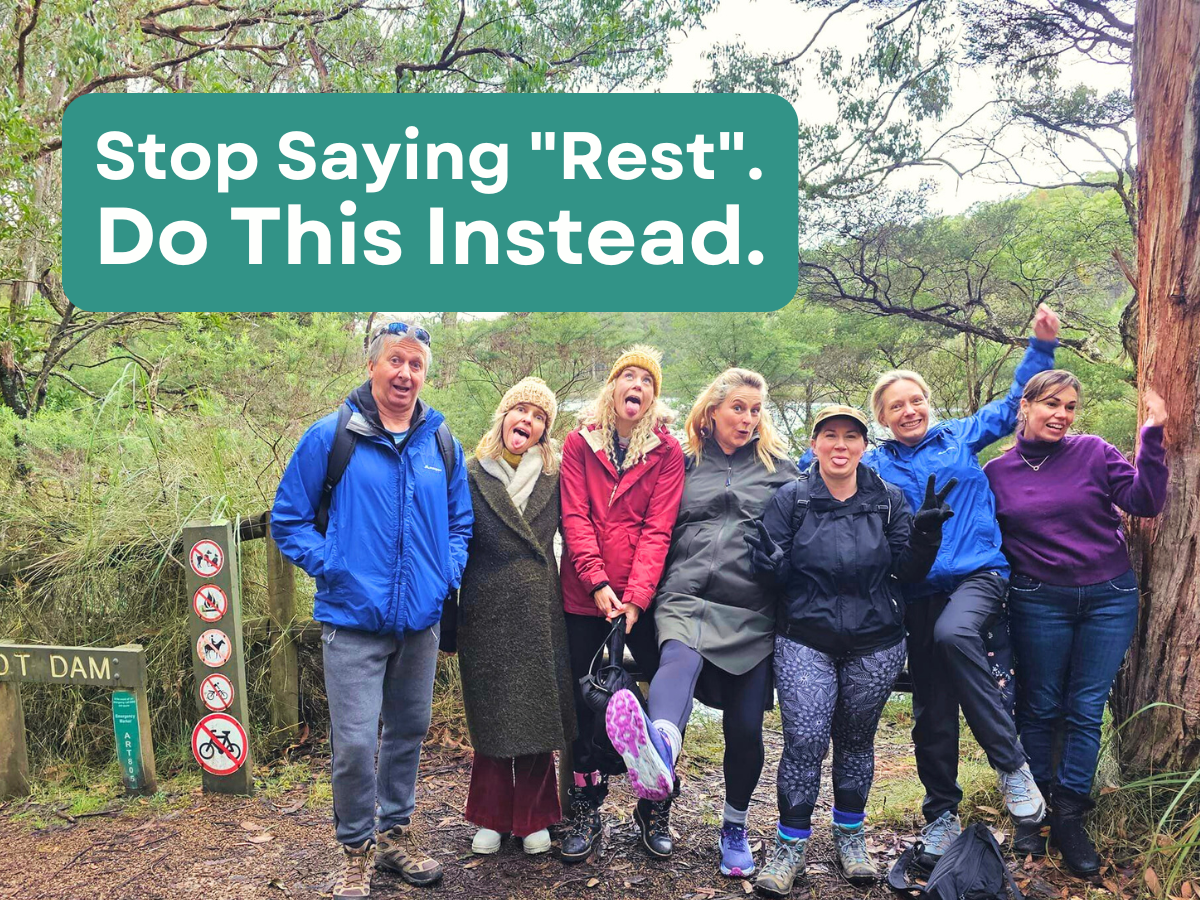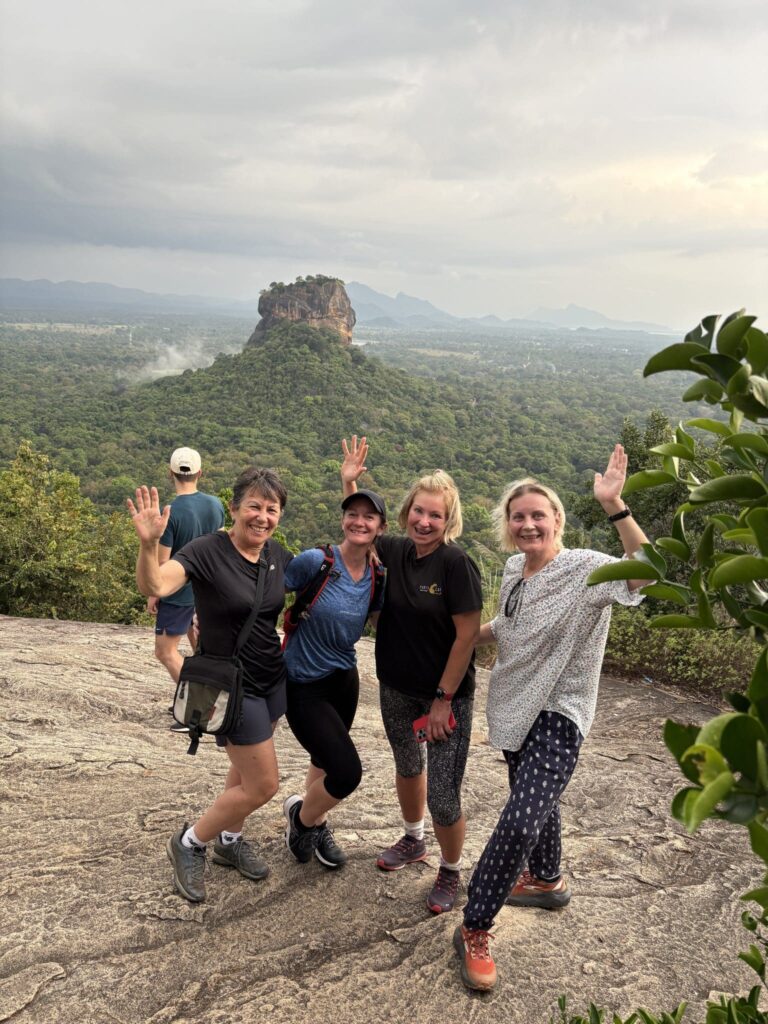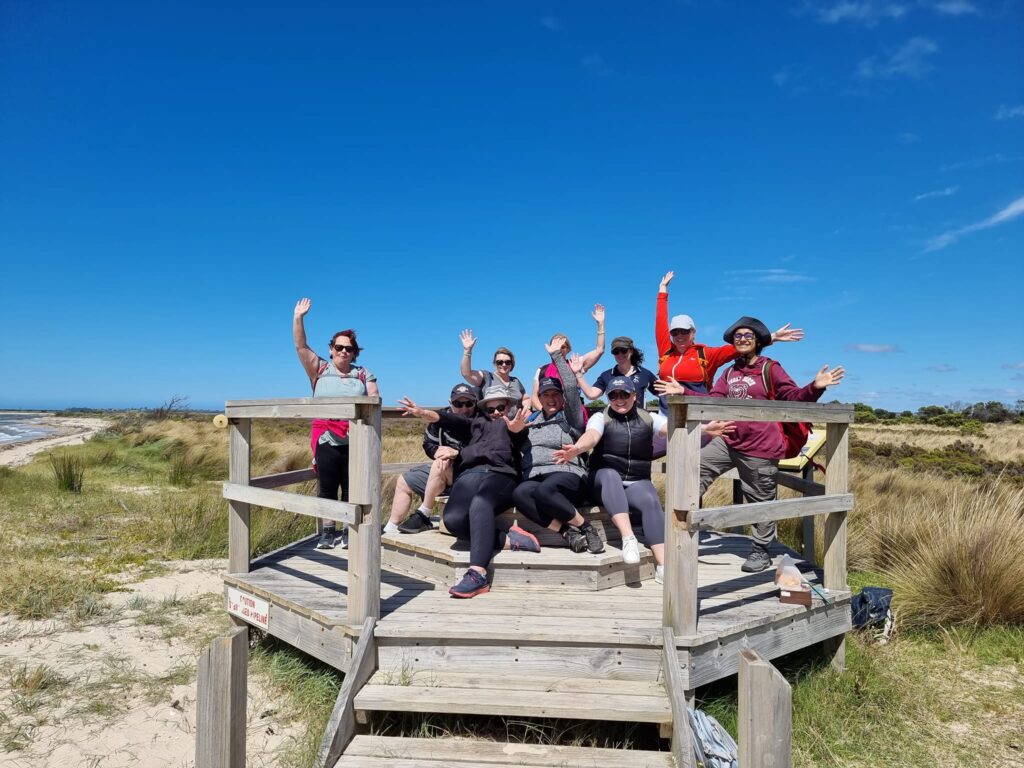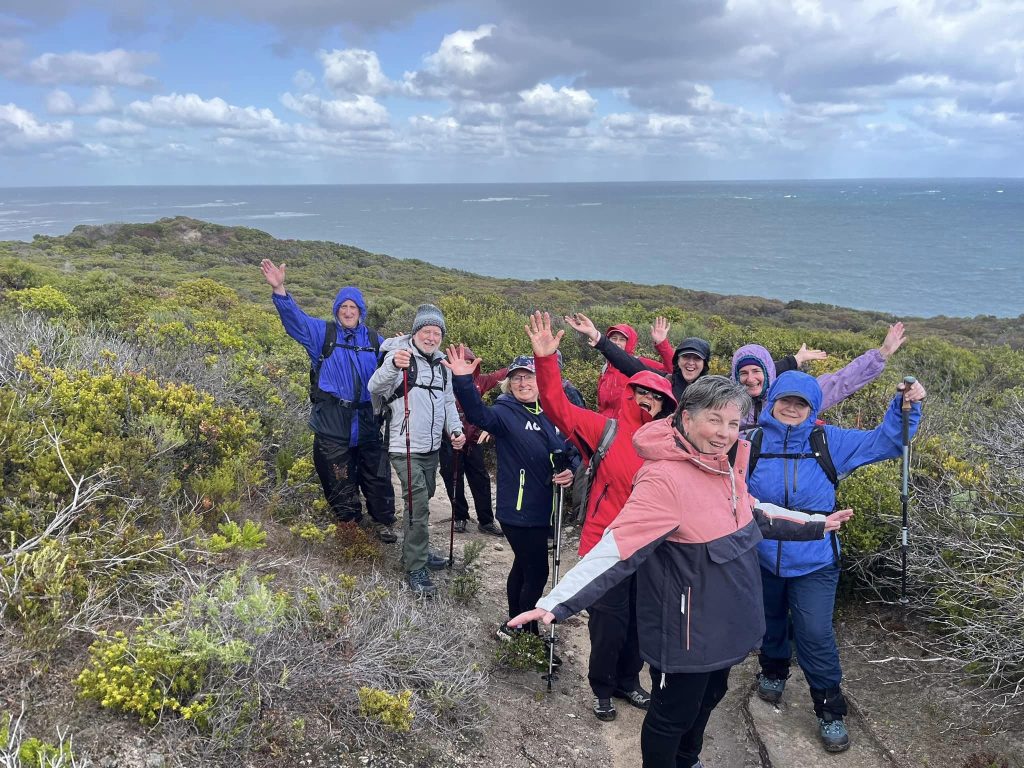Your cart is currently empty!
Stop Saying “Rest”. Do This Instead.

Let’s talk about rest. Because sometimes, it’s doing more harm than good. When we tell someone to “just rest”, what do we really mean? For many people, “rest” looks like collapsing on the couch, scrolling their phone, or binge-watching Netflix. But the problem is when the body is still, but the brain keeps spinning. Anxiety ramps up. Rumination kicks in. Sleep gets worse, not better. And the original issue? It snowballs. So while rest sounds helpful, it often keeps us stuck, especially when the exhaustion isn’t physical, but mental, emotional, or creative.
Not all ‘tired’ is created equally
In the work we do, I rarely see people who are physically overworked. More often, they’re experiencing cognitive overload, emotional depletion, creative burnout, and compassion fatigue. Our brains aren’t like batteries that just need to be turned off, they need movement, novelty, agency, and social regulation.
A growing body of research backs this up. Studies show that green exercise (physical activity in natural environments) significantly improves mood, reduces anxiety, and enhances cognitive functioning more than exercise indoors. Nature exposure reduces activity in the part of the brain associated with rumination and self-critical thoughts. Structured reflection tools like Cognitive Narrative Therapy and practices from Self-Determination Theory (autonomy, competence, and relatedness) help us reframe stress and find meaning.
Mindfulness in motion, particularly when practiced outdoors, improves sleep, mood, and energy more effectively than passive rest. “Rest” without connection, movement, or meaning can leave us feeling flat, foggy, and more anxious than before.


Let’s compare it to a physical injury
Years ago, if someone hurt their back or had a knee operation, they were told to rest. But we now know that too much rest delays recovery. If you’ve had a hip replacement, you’re up walking the next day. Chronic back pain? The treatment is gentle movement, not immobilisation. So why haven’t we applied the same logic to mental and emotional wellbeing?
We know now that psychological and emotional challenges benefit from the same principles of movement, gradual re-engagement, social support, and ecosystem-based healing. Yet we’re still prescribing more “rest” for people whose real issue is disconnection, stagnation, or a loss of meaning.
What is the true way to rest?
From both research and lived experience, what supports true restoration is:
Movement, especially outdoors
Sunlight and circadian rhythm support
Social connection and co-regulation
Autonomy and reframing through positive psychology tools
Nature being unstructured, imperfect, and grounding
Ecosystem thinking, not individualised pressure to fix yourself


What we offer instead of more “rest”
At Take Shape Adventures, this is the reason why we invite people to move through burnout, not freeze in it. Here are just a few ways you can return to wellbeing without wallowing in the burnout zone:
Join a Walk to Wellbeing Day, a guided reset designed to calm your nervous system while gently reactivating your mind and body.
Come on a messy, imperfect, real-life wellness retreat where challenge, laughter, mud, shared food, and outdoor connection do more than any day spa could.
Get your team on the trail with our Psychosocial Risk Wellbeing Walks, where walking side-by-side breaks down communication walls, builds cohesion, and fosters real wellbeing in your workplace.
It’s time to change the language. Let’s stop defaulting to “just rest” and start getting outdoors, moving gently, connecting meaningfully, and walking it out together. Because real recovery isn’t always about stillness and sometimes restoration has to begin with a step forward.

